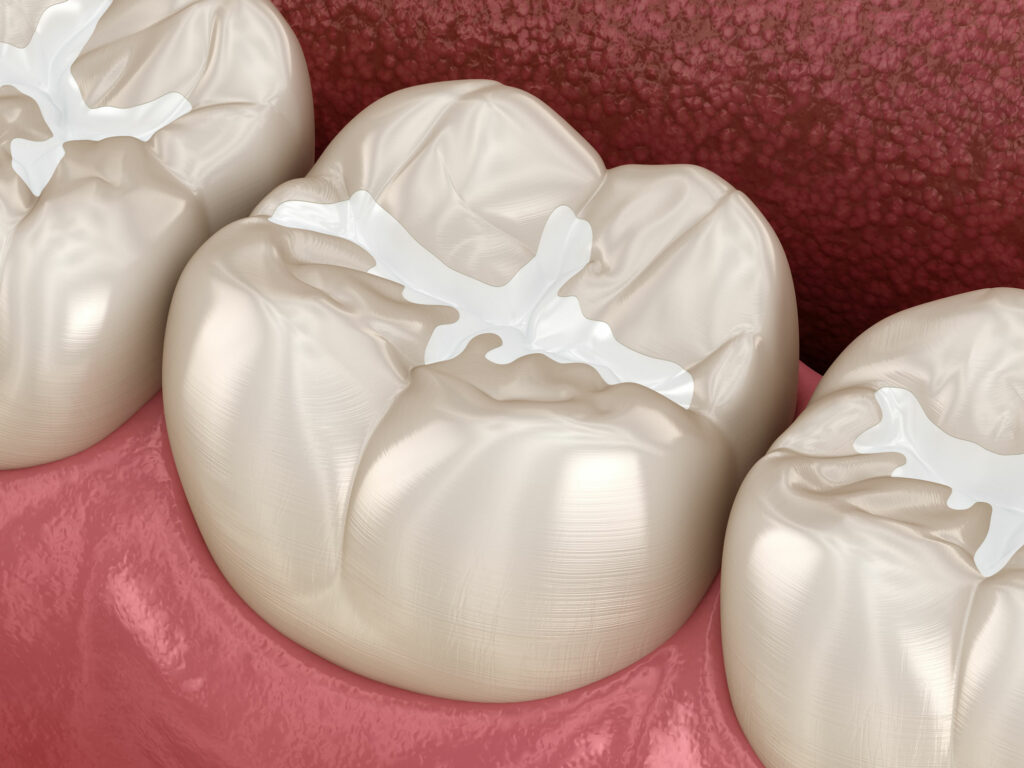Dental Fillings

We want our community to feel comfortable coming to our team at Reed Family Dental. Our dentist, Dr. Allison Reed, can treat a cavity quickly while our friendly team helps you feel at ease.
What Is the Purpose of a Dental Filling?
A filling stops the progression of tooth decay that is damaging the affected tooth. This treatment method protects the tooth and restores its strength and function. By removing the damaged part, you can expect an end to symptoms associated with the cavity, such as pain or discomfort. This is a minimal treatment that can prevent crowns, inlays or other dental work.
How Does the Filling Process Work?
The process begins with the removal of the tooth decay. Dr. Reed drills an opening into the tooth. This process has no pain, as our dentist uses anesthesia before she starts. Through the drilling process, Dr. Reed clears away the damage inside the tooth. When the decayed portion is gone, she cleans the area thoroughly and then fills it with a material that restores the previous shape and function of the tooth.
What Is the Filling?
Dentists have a choice of different materials to fill the cavity created by tooth decay. Previously, metal amalgam fillings were popular, which are responsible for countless adults opening their mouths to point out the metal inside.
Today, the more popular choice by dentists and patients alike is a tooth-colored material that matches the natural tooth. This is something we can offer at our office. Once our dentist uses this material, there’s no sign you had any dental work performed and nothing to take away from your best smile.
What Are Signs of a Cavity?
Experiencing certain symptoms in your mouth could indicate tooth decay. Common symptoms include continuous pain coming from a certain area or sudden pain from eating or drinking. You may experience sensitivity from consuming something that is hot or cold. During flossing, your floss may get stuck in a certain area. You may also be able to notice spots on the tooth.
Nonetheless, you won’t know for sure whether you have a cavity or a different dental concern. If you notice symptoms, Dr. Reed can make a diagnosis through an exam, using digital X-rays if needed. She can let you know whether you have a cavity or a different problem that needs to be addressed.
Come In for a Visit
Generally, the need for a dental filling will come about if our dentist notices a cavity during one of your regular exams or if you experience a symptom like pain that brings you in for a consultation.
Either way, the process starts with an exam from Dr. Reed, who will treat you with compassion and talk about all available options with you before starting any treatment. Call our receptionist at 740-622-5695 to make your exam appointment.

